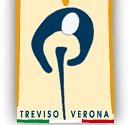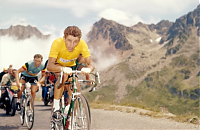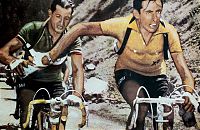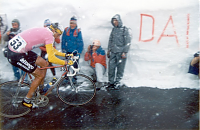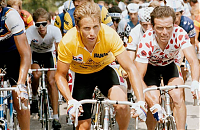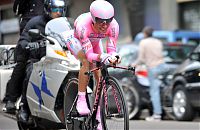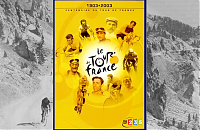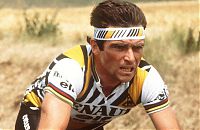Tom Simpson

Making history: Tom Simpson became the first British rider to wear the yellow jersey at the Tour de France after stage 12 in 1962 from Pau to St Gaudens.
Tom Simpson became the first British rider to win Paris-Nice in 1967, and was the only Brit to have done so until Bradley Wiggins’s victory in his golden season in 2012.
It was later in the 1967 season that Tommy Simpson died. He collapsed on the ascent of Mont Ventoux during stage 13 of the Tour de France and could not be resuscitated.
Rik Van Looy

Rik II one of the greatest one-day cyclists who won two world championships as well as eight “monument” classics, passed away on 17 December 2024. He was 90.
In a career that spanned a successful decade from the late 1950 onwards, he was the unchallenged No. 1 star in Belgium before he had to give way to the rise of Eddy Merckx, arguably the greatest cyclist of all time.
“He was a super champion. He was very demanding on himself, as he was on his teammates,” Mr. Merckx told VRT network. “Van Looy never showed any kind of weakness. He never cracked.”
Among the monument classics, he won Paris-Roubaix three times, the Ronde of Flanders twice and Milan San Remo, the Tour of Lombardy and Liege-Bastogne-Liege once. Winning the grand slam is especially tough in cycling since each classic demands specific qualities, be it sprinting, climbing or dealing with cobblestones.
Only two other riders completed the feat, fellow Belgians Merckx and Roger De Vlaeminck.
Mr. Van Looy’s world titles came in 1960 and 1961. And although he won 39 stages in Grand Tours, he never won the overall classification in either the Tour de France, the Giro of Italy or the Vuelta of Spain.
The federation said he won over 450 races in a career that began in 1953 and ended in 1970.
Source
Luigi Ganna: leggenda

Come una leggenda.
Ai giorni nostri ha dell’incredibile e dell’irreale il fatto che il giovane diciassettenne Luigi Ganna, tutte le mattine, si recasse in bicicletta da Induno Olona a Milano per fare il muratore, con una sacca fissata sul manubrio, con una pagnotta e una bottiglia d’acqua zuccherata allungata con un po’ di vino. Sole, pioggia o neve che fosse ogni giorno percorreva 100 km in bicicletta attraverso strade di terra battuta e un gran numero di buche. Luigi Ganna a questo suo impegno, alle energie consumate ogni giorno, dà un’altra valenza, usandolo come duro e serio allenamento per l’attività sportiva in bicicletta. Così nel 1905 Luison, detto anche il “gigante buono”, decide che la bicicletta sarà lo strumento con cui giocarsi il proprio avvenire. Sin dalle prime corse emerge il talento del giovane Ganna il quale si rivela ben presto l’uomo da battere in un ciclismo che sta diventando sempre più uno sport popolare. Consegue vittorie sin dal primo anno di attività agonistica, ogni anno che passa è una continua escalation fino alle grandi vittorie del 1909, anno in cui trionfa alla Milano – Sanremo e soprattutto al primo Giro d’Italia. Nello stesso anno grazie ai successi sportivi si compra la casa e una piccola officina. La diffusione delle sue biciclette avviene nel 1912 quando, con la vittoria alla Gran Fondo “La seicento chilometri” su una bicicletta di propria costruzione, si ha una delle più credibili presentazioni del nuovo prodotto. L’ascesa dell’azienda è rapida e in pochissimi anni l’officina diventa capannone e la produzione da artigianale industriale. Lavoratore instancabile dalla ferrea volontà, si impegna per offrire alle masse lavoratrici una bicicletta robusta, elegante e a basso prezzo. Nel 1914 lascia le corse per dedicarsi alla sua attività e successivamente alla costituzione della prima squadra “Ganna” ottenendo numerose vittorie tra le quali è doveroso ricordare la vittoria di Fiorenzo Magni del Giro d’Italia del 1951 in sella ad una bicicletta Ganna. Dopo la prima guerra mondiale l’azienda iniziò a costruire anche motocicli e Ganna divenne ben presto un marchio apprezzato in Italia e all’estero.
Negl’anni la tradizione non ha mai cessato di essere tramandata e oggi Ganna produce una gamma completa di biciclette con oltre 100 modelli suddivisi nelle linee city bike / trekking, hybrid, corsa, mountain bike, special bikes, junior ed ecobike che si contraddistinguono per il design ricercato, la qualità dei materiali e quella cura del dettaglio propri di un marchio che ha fatto storia.
Source: Retro-Ganna
La GIUBILATO CICLI ha una lunga tradizione. Nasce come caratteristico negozio di biciclette nel centro di Bassano del Grappa verso la metà degli anni 40 e grazie allo spirito imprenditoriale di Rino Giubilato si afferma ben presto come leader nella produzione e vendita di biciclette con gli storici marchi Brenta e Zenith nel territorio bassanese. Nel 1972 i due figli maggiori di Rino Giubilato trasformarono la piccola produzione artigianale in produzione industriale estendendo la vendita delle biciclette Brenta e Zenith in tutto il territorio nazionale. Nel 1982 l’allora denominata Cicli Brenta & Zenith acquisì il marchio GANNA iniziando la sua espansione anche verso i mercati esteri, principalmente Francia, Svizzera, Polonia, Austria e Stati Uniti. Tra i progetti sviluppati nel tempo, particolare importanza riveste la divisione ricambi, all’avanguardia circa la distribuzione di ricambi ed accessori ed in grado di proporre ai propri clienti un’ampia offerta commerciale. Da circa un paio d’anni sta riscuotendo sempre più successo la linea di biciclette GANNA RETRO’ che richiama le biciclette di un tempo rievocando allo stesso tempo il valore storico del marchio GANNA: la produzione interamente italiana ne garantisce sia l’originalità sia l’elevato standard di qualità. Biciclette GANNA, Ganna Retrò e Divisione Ricambi: un’offerta completa mirata a soddisfare in modo eccellente tutte le esigenze della propria clientela.
Cecchi, The Giro To Give A Gift To His Children
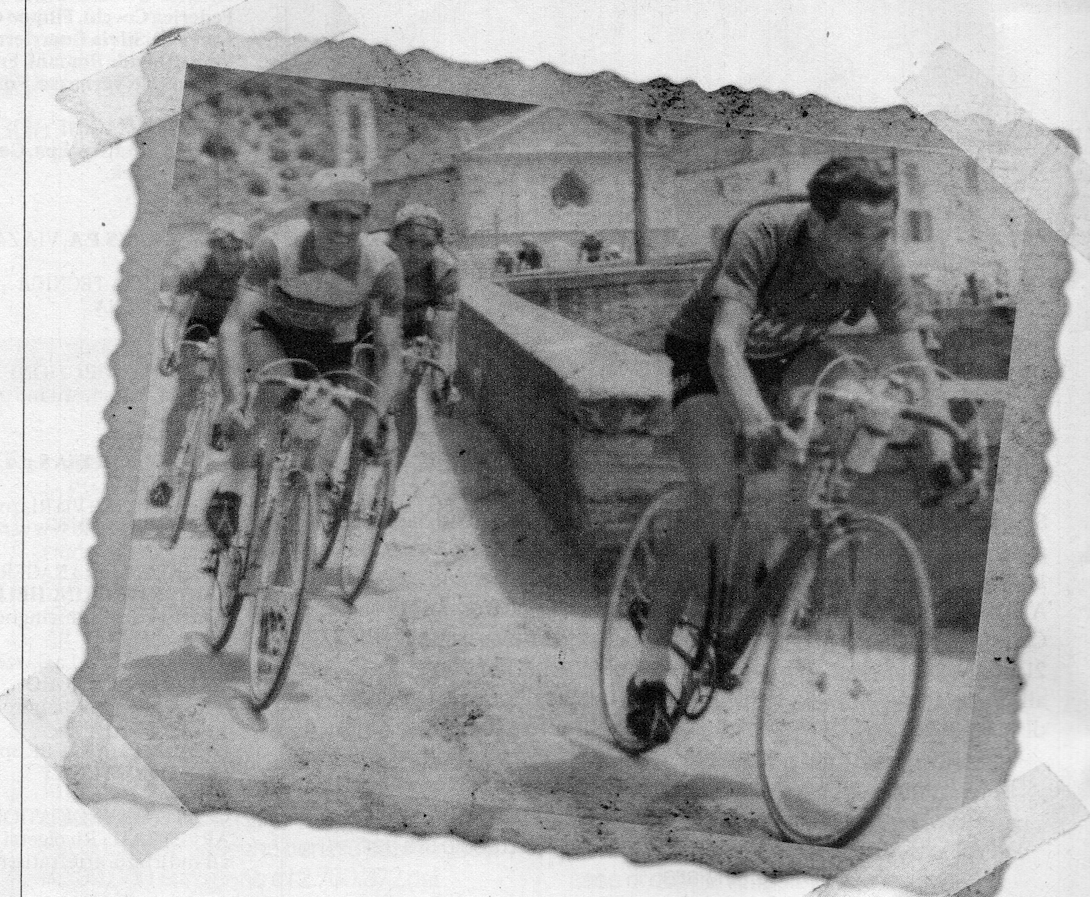
Sulle strade d’Italia Ezio Cecchi (1913-1984) participated in 11 editions of the Giro d’Italia. Here, during the 4th stage of May 26, 1950, the Livorno-Genoa.
In ’48, surprisingly, with 3 stages to go he was wearing the pink jersey, but it didn’t finish as he had hoped.
The race was won by Fiorenzo Magni, who took advantage of some “help” on the climb.

“scopino di Monsummano”.
- Byline Andrea Schianchi
(translated from Italian)
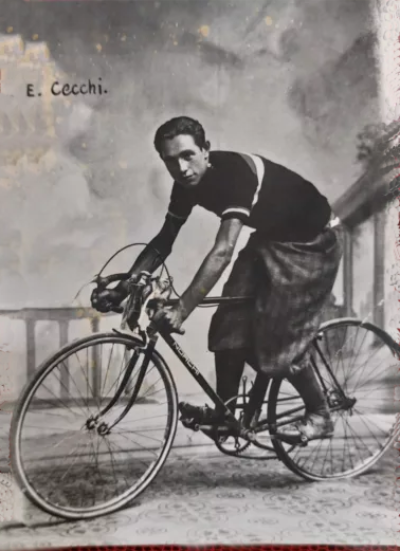
The 90 Year Old Cyclist : Benjamin Piovesan
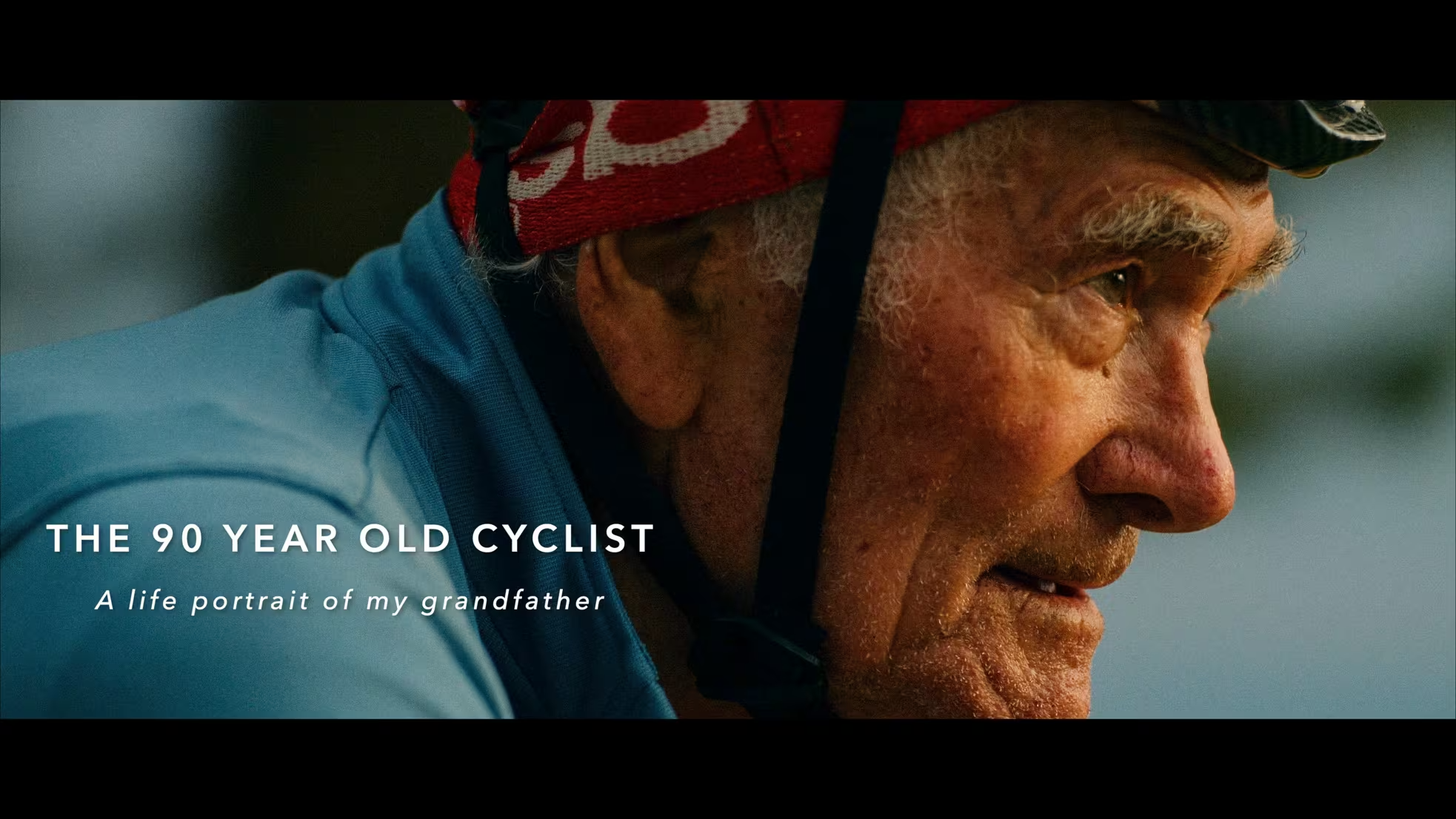

This is a film portrait of Florent Piovesan’s grandfather, Benjamin Piovesan, illustrated through his love of cycling. Benjamin immigrated to France, at the end of World War II, when he was 14 years old (approximately 1947) with his family who were looking for employment opportunities.
Growing up in France, Benjamin’s parents bought him a bike when he was young so he could come home to the family farm once a week from his work some 25 kilometers away. But then, life took over, and Benjamin didn’t ride for many years until his son, Patrick, got involved in serious cycling. Patrick bought his dad a road bike and Benjamin started cycling again.
Florent Piovesan:
“10 years ago I made a short documentary about my grandfather who was 80 at the time and still cycling everyday. The video was very well received and was even Staff Picked! This was my first proper short documentary and of course it was made with limited gear, experience and budget.”
The History Of Cycling
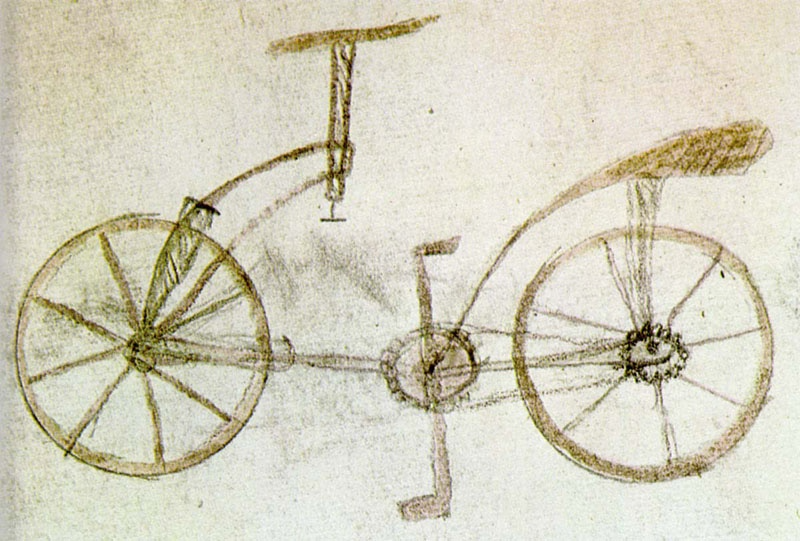
For many people, riding a bicycle was something they did as a kid, but it’s not something they did much of once they got into their teen years. For some, it’s because they got a car and could drive places instead of a bike. For others, it’s because they live in an area where bicycling isn’t an option—those out in rural areas with unpaved roads may not always be able to bike places. But with new inventions such as the electric bike and bicycles that are safer, more and more people are turning to bikes as a way of saving money and going green.
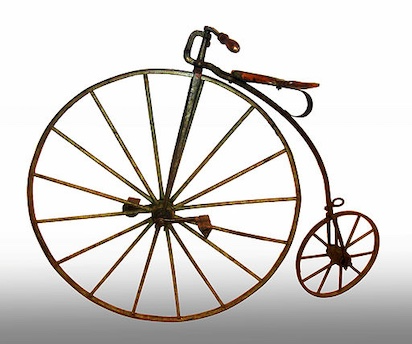
In 1868, the first documented bicycle race was held. Bikers racked 1,200 meters in the Park of Saint-Cloud in Paris.
In the U.S., bicycles were incredibly popular in the early 1900s. The oldest bicycle racing club, the St. Louis Cycling Club, was established in 1887 and continues to host races and other events today. However, by 1920, the practice of cycling quickly died out because of the automobile and the growth of larger suburbs. In Europe, cycling continued to go strong until the 1950s.
Today, though, more and more people are biking to work as a way of saving on gas, getting exercise, and because it’s fun.
Wikipedia: The History of Cycling – Brief history of the sport
History of the Bicycle – Where and how it was created
Cycling Timeline – Quick history of the bicycle and cycling
Fun Facts about the Bike – Including some historic information
Bicycle Museums – List of different museums around the world
Top: Early Bicycle concept from 1534 attributed to Gian Giacomo Caprotti, apprentice to the famous Leonardo da Vinci.
RM - "Bicycle"
Over a leisurely piano and acoustic guitar, RM talks about his feelings when he went cycling in his hometown during the COVID-19 pandemic. “For me, riding a bike always gives me a thrill, but when I put my feet on the two pedals it always feels a bit sad,” the Rap Monster wrote on BTS’ blog. “Whether it’s because there’s a lot of things that I miss… Even I don’t know the reason.”
He added: “Ever since I was a trainee, I always wanted to move the blurry scenery that I couldn’t quite capture while riding a bicycle into a song.”
Rolling with two feet
I face you, who I can’t see
A few centimeters of shaking
Are greeting me as always
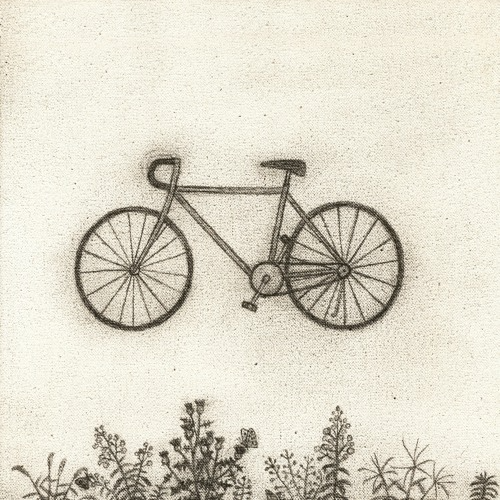
[Verse 1]
I wanna keep the bass down low
My mind is already in weekend mode
I don’t see no open cars, no open bars
It’s not bad, I’m all alone in this road
The minds of people are floating like an island
The night that might never come
Walk and roll across the horizon
To the vanishing point that we chose
[Chorus]
If you are sad, let’s ride a bicycle
Let’s put the wind under the feet
Oh, let’s ride a bicycle
With arms opened freely
[Post-Chorus]
Na, na-na-na, na-na-na
Na-na-na-na-na
Na-na-na, na-na-na, na-na-na
Na-na-na-na-na
Kim Nam-joon (Korean: 김남준; born September 12, 1994), known professionally as RM (formerly Rap Monster), is a South Korean rapper, songwriter, and record producer. He is the leader of South Korean boy band BTS.
Tre uomini in bicicletta

Emilio Rigatti
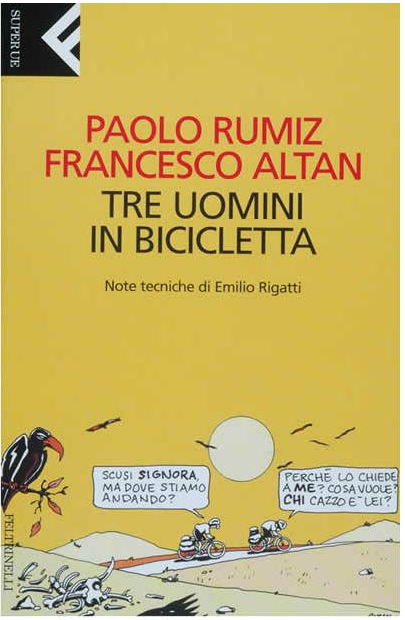 “Dove andate?” Istanbul. Confine di Trieste, ore 16, vento di Nordest. Il poliziotto sloveno confronta i ciclisti sbucati dal nulla con le foto segnaletiche sui loro passaporti. Altan Francesco, 58, vignettista. Rigatti Emilio, 47, professore. Rumiz Paolo, 53, giornalista. I tre matti in mutande aspettano davanti all’autorità costituita, si godono l’effetto della loro risposta demenziale. Sanno che l’uomo in divisa deve calcolare in fretta molte distanze anomale. Primo, tra la lentezza delle bici e la lunghezza della strada, duemila chilometri. Secondo, fra la rispettabile maturità dei viaggiatori e le loro sacche da globe-trotter. Terzo, tra la nobiltà della meta finale e la miseria che c’è in mezzo, i Balcani. Ma soprattutto l’uomo deve inghiottire il dislivello fra la propria domanda di routine e quella risposta fuori ordinanza, scodellata con perfido understatement. “Istanbul” come dire Treviso, Udine, Lubiana. “Siamo curdi che tornano a casa.”
“Dove andate?” Istanbul. Confine di Trieste, ore 16, vento di Nordest. Il poliziotto sloveno confronta i ciclisti sbucati dal nulla con le foto segnaletiche sui loro passaporti. Altan Francesco, 58, vignettista. Rigatti Emilio, 47, professore. Rumiz Paolo, 53, giornalista. I tre matti in mutande aspettano davanti all’autorità costituita, si godono l’effetto della loro risposta demenziale. Sanno che l’uomo in divisa deve calcolare in fretta molte distanze anomale. Primo, tra la lentezza delle bici e la lunghezza della strada, duemila chilometri. Secondo, fra la rispettabile maturità dei viaggiatori e le loro sacche da globe-trotter. Terzo, tra la nobiltà della meta finale e la miseria che c’è in mezzo, i Balcani. Ma soprattutto l’uomo deve inghiottire il dislivello fra la propria domanda di routine e quella risposta fuori ordinanza, scodellata con perfido understatement. “Istanbul” come dire Treviso, Udine, Lubiana. “Siamo curdi che tornano a casa.”
Emilio rompe il silenzio, dimentica che le stellette hanno poco senso del humour. Ma gli va bene, il “witz” buca la divisa, il poliziotto sorride e si decolla leggeri verso le foreste della Slovenia, imboccando all’incontrario il corridoio dei clandestini, dal confine più colabrodo d’Europa alla stazione centrale dell’emigrazione asiatica. Ci andiamo apposta, alla faccia[…]”
Excerpt From: Francesco Altan Paolo Rumiz. “Tre uomini in bicicletta.” Apple Books.
Autori: Paolo Rumiz, Francesco Tullio Altan
Note tecniche di Emilio Rigatti
Feltrinelli Editore, Aprile 2002
Bicycle Love

“I love the bicycle. I always have. I can think of no sincere, decent human being, male or female, young or old, saintly or sinful, who can resist the bicycle.”
— William Saroyan
BICICLETTE IN ARCHIVIO
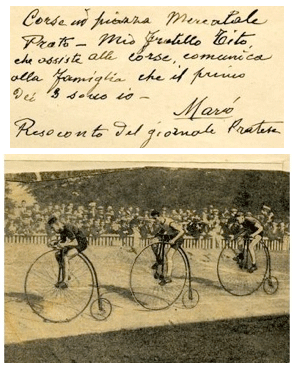
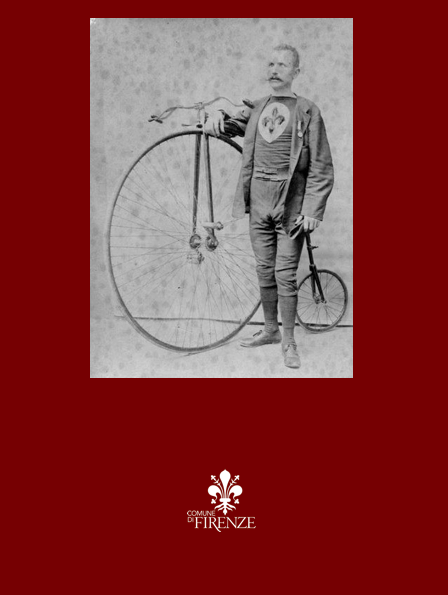
Foto di copertina: Mario Panetti (Firenze 1863- 1955). Corridore al tempo dei maestosi velocipedi, fotografo e poeta in lingua e in vemacolo. “Partecipò, nel 1884 al primo Circuito biciclistico delle Cascine, compiendo ben 120 Km. alla media, veramente fantastica per quei tempi, di 15 Km l’ora.” Net ritaglio di giomale (qui sopra) da lui postillato, lo si vede ritratto durante una corsa in Piazza Mercatale a Prato.
L’Archivio in bicicletta
Il ciclismo a Firenze
tra sport e vita quotidiana
Mostra a cura di:
Luca Brogioni, Giuseppe Cuscito, Francesca Gaggini, Barbara Grazzini, Giulio M. Manetti, Riccardo Saettone, Maise Silveira
Si ringraziano Mauro Bendoni e Claudio Villoresi della Sezione Storica della
Biblioteca delle Oblate per le ricerche su: “L’Illustrazione Italiana”
17 – 30 settembre 2013
Orario
Lunedì e Venerdì 10,00 – 14,00
Martedì, Mercoledì e Giovedì 10,00 – 17,30
Archivio Storico del Comune di Firenze Via dell’Oriuolo, 35
https://cultura.comune.fi.it/pagina/archivio-storico
SOURCE
(also in archive)

